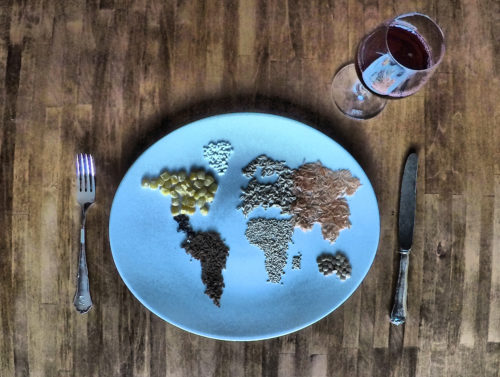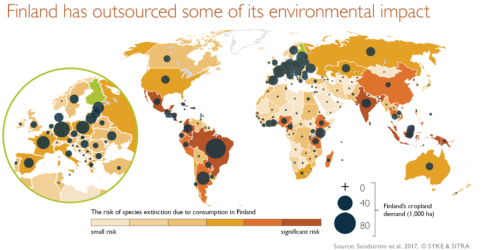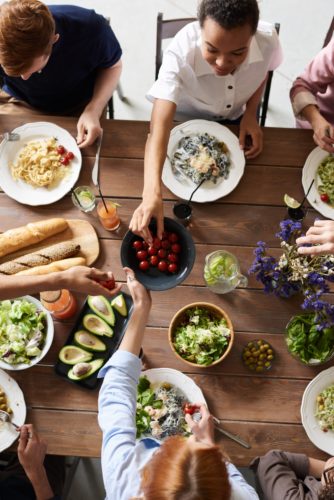Vilma Sandström has a PhD in Environmental Science and she is passioned about using science and research as tools to work for more sustainable societies. Food systems and their sustainability challenges have been in the focus of her research. In this blog post she shares her thoughts related to food trade.

What did you have for breakfast today? Or for dinner yesterday? Did you think of where your food had been produced? How long way had it traveled before ending up in your plate? Or if you had meat or dairy products, did you stop to think what the animal behind your food had eaten? And where was that produced? How much land or water was needed to produce that food and feed? And would those resources have had some other competing uses? How is your consumption related to e.g. deforestation in Brazil or water depletion in India? Does it matter? Why should I even think about this?
I was puzzled with these kinds of questions and eager to understand better the hidden environmental and social impacts of our everyday lives. By then, I was still a student in the Environmental Science and Policy master’s program in the University of Helsinki. My curiosity led me to work with these topics in my master’s thesis. Later, the ideas developed into a doctoral research plan and I ended up working with these questions also in my PhD research.
Globalization has brought incredible variation of food choices for our lives. As my colleague Anna Chrysafi wrote in an earlier blog entry, grocery shopping can be a daunting task for an environmentally aware consumer. Every day of the year we have fresh fruits and vegetables, fish and meat from all around the world offered to us in our local supermarkets and our lunch restaurants. Calories traded in the material flows of food imports and exports between countries more than doubled in the past 30 years and currently about a fourth of all food produced is traded internationally. But from an environmental point of view, is this a good or a bad thing?
Well, there is no simple answer to this. The increase in global food trade has contributed positively to development by increasing food availability and food security in many regions, and for example by creating employment in the production areas. Food trade has also increased the nutrient intake in many countries, such as Finland with long winters and cold climate that limit the domestic food production. Trade has also reduced net resource use of e.g. water or land, comparing to a no-trade alternative scenario, because food is often produced and traded from areas with higher production efficiency. If we focus only on the greenhouse gas emissions, the biggest emissions occur in the primary production. Transportation accounts for only small share of total emissions. Therefore, for the carbon footprint point of view, it seems to be more important what you have in your plate (e.g. animal vs. plant-based protein), than where it has been produced.

However, trade has also increased the displacement of the environmental pressure, when also the consumers from geographically distant areas consume limited resources such as land or water from the production areas. This way consumption has accelerated habitat destruction far away from where the food actually is eaten. When the distance between consumption and production increases, it is often difficult for a consumer to get information about the direct and indirect impacts of the primary production. It has been estimated, that a third of global species extinction threats are due to the displacement effect of international trade.
So, to come back to the questions that I started with, I think we should care more about where our food comes from and understand better the impacts we cause elsewhere. This does not mean, however, that all trade is bad. But there is a need to increase the awareness of the hidden negative impacts so that we could harness only the positive aspects of trade to serve the sustainability aims.
Although my PhD thesis is now wrapped up and stored in my book shell, I am happy to have the opportunity to continue working with food systems sustainability also as a postdoctoral researcher in SOSaquaterra project. This project aims to explore possibilities of meeting the global food demand within the Earth’s carrying capacity and I look forward for finding out where our exploration takes us!
Vilma Sandström is a postdoctoral researcher working with SOSAquaterra project in the Water and Development Research Group.

